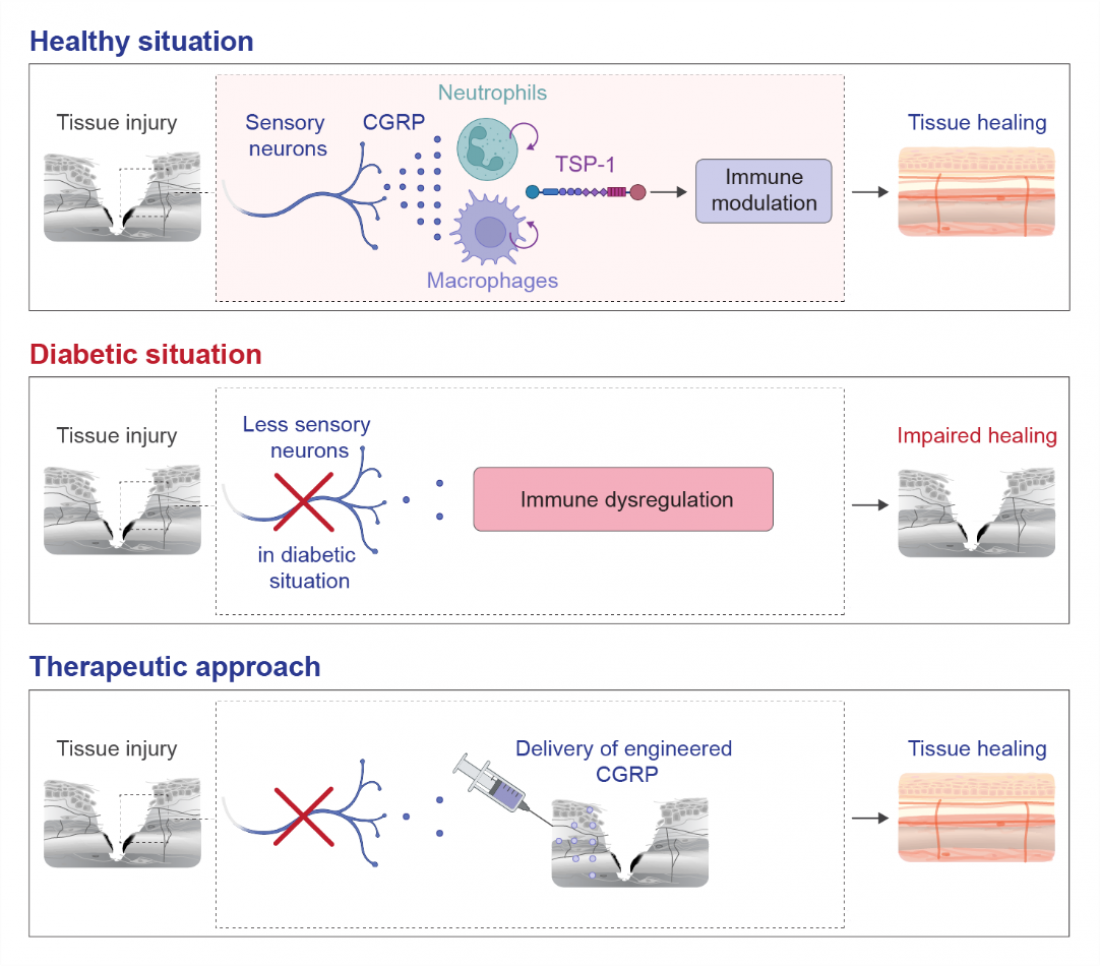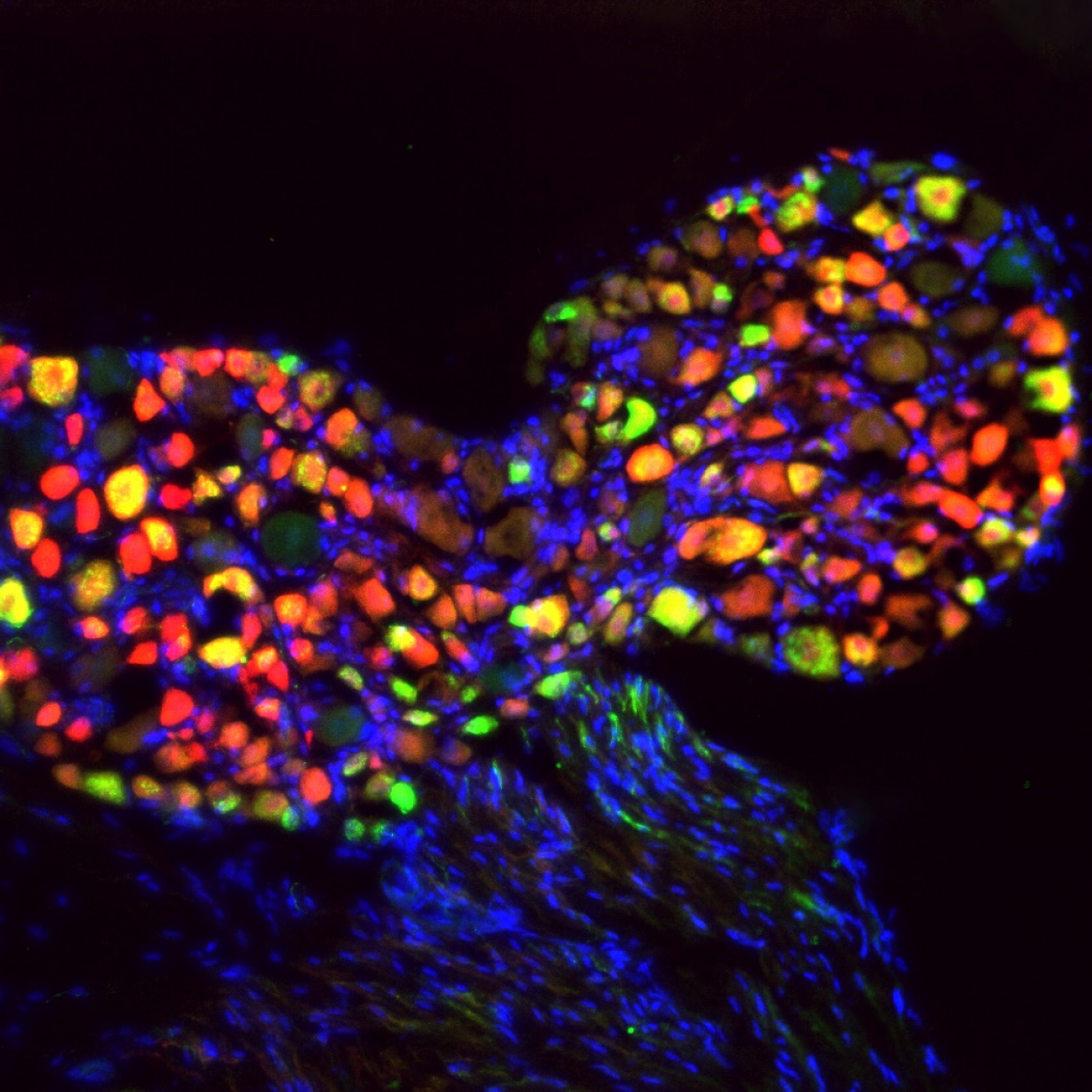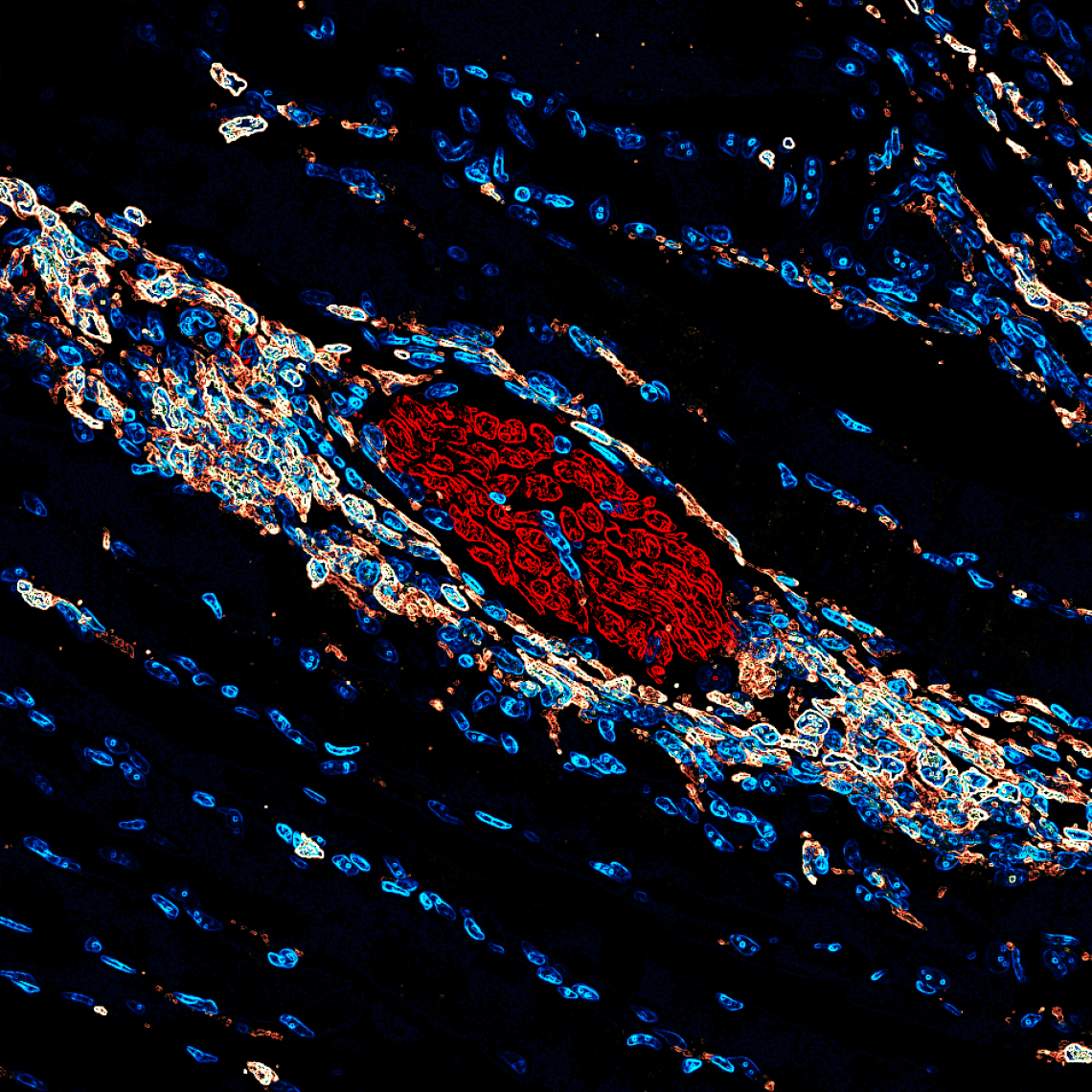Graphical summary of the study
Researchers from Monash University and Osaka University have unveiled a groundbreaking discovery regarding the pivotal role of sensory neurons in orchestrating tissue repair and regeneration, offering significant promise for patients with poorly healing tissues and diabetes.
Dorsal root ganglia expressing CGRP after muscle injury
Collaborating with Professor Shizuo Akira from IFReC, a research team led by Associate Professor Mikaël Martino from Monash University, who also held a cross-appointment position at Osaka University, recently published a significant advancement in regenerative medicine in Nature.
Their research sheds light on the intricate interplay between the nervous and immune systems, highlighting the critical involvement of sensory neurons in the repair and regeneration of tissues. While nociceptive sensory neurons are primarily associated with pain sensation, their contribution to tissue regeneration has been unclear until now. Through their research, the team demonstrated that the removal of a specific subtype of sensory neurons containing the Nav1.8 ion channel significantly impairs skin wound repair and muscle regeneration following injury. Furthermore, they revealed that the endings of these sensory neurons extend into injured skin and muscle tissues, communicating with immune cells through the neuropeptide calcitonin gene-related peptide (CGRP) during the healing process. This neuropeptide plays a crucial role in influencing immune cells to aid tissue healing after injury. In preclinical models, such as mice lacking sensory neurons and diabetic mice with damaged peripheral nerve cells, the administration of an engineered version of CGRP, designed to enhance its efficacy, accelerated wound healing and promoted muscle regeneration.
Sensory neurons growing into injured muscle
These findings hold great promise for regenerative medicine, particularly in addressing poorly healing tissues commonly observed in conditions such as diabetes. Looking ahead, the team aims to develop innovative therapies targeting the underlying causes of impaired tissue repair by harnessing neuro-immune interactions.
Monash University is one of Osaka University's Global Knowledge Partners, a strategic partnership aimed at developing high-quality and sustainable research and education programs that can contribute to the resolution of global issues. Lead author Mikaël Martino, a key advocate for collaboration between the two universities, emphasized the importance of the strong inter-institutional relationship and cross-appointment system in enabling international researchers like himself to collaborate effectively with scientists at Osaka University.
###
The article, “CGRP sensory neurons promote tissue healing via neutrophils and macrophages,” was published in Nature at DOI: https://www.nature.com/articles/s41586-024-07237-y
About Osaka University
Osaka University was founded in 1931 as one of the seven imperial universities of Japan and is now one of Japan's leading comprehensive universities with a broad disciplinary spectrum. This strength is coupled with a singular drive for innovation that extends throughout the scientific process, from fundamental research to the creation of applied technology with positive economic impacts. Its commitment to innovation has been recognized in Japan and around the world, being named Japan's most innovative university in 2015 (Reuters 2015 Top 100) and one of the most innovative institutions in the world in 2017 (Innovative Universities and the Nature Index Innovation 2017). Now, Osaka University is leveraging its role as a Designated National University Corporation selected by the Ministry of Education, Culture, Sports, Science and Technology to contribute to innovation for human welfare, sustainable development of society, and social transformation.
Website: https://resou.osaka-u.ac.jp/en
About Immunology Frontier Research Center (IFReC), Osaka University
IFReC was established by the support of the World Premier International Research Center Initiative (WPI) in 2007. IFReC aims to overcome immune-related diseases by clarifying the whole picture of the immune system, and has promoted globally competitive fundamental research with excellent researchers from overseas.
Website: https://www.ifrec.osaka-u.ac.jp/en/





